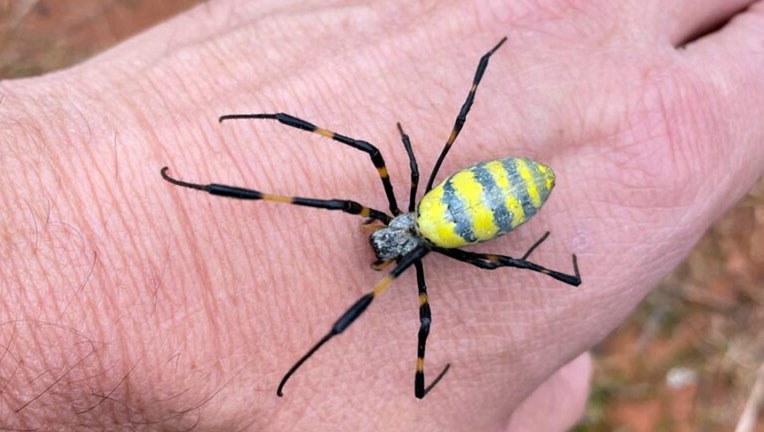'Floating' Joro spiders are moving north: Will they spread to MN?

Could the "floating" Joro spider that is spreading along the Eastern Seaboard make it's way to Minnesota? (FOX 9)
(FOX 9) - A "floating" invasive spider species is expected to spread up the East Coast of the United States this summer.
Joro spiders are known for their ability to balloon, using their web to float in the air.
A study earlier this year warned that the spiders were on the move. Currently, the invasive spiders have been found in southeast U.S. cities. However, researchers say that northern climates, including the Midwest and Great Lakes region, may be more suitable for the spiders.
Will the Joro spider spread to Minnesota?
The Minnesota Department of Agriculture says it's likely the Joro spiders will eventually make their way to the Midwest.
"I would not be surprised to see them show up in Minnesota in some capacity," wrote Minnesota Department of Agriculture entomologist Angie Ambourn in an email to FOX 9. "Will they become established here? That I do not know."
She adds that there isn't much the state can do to prevent the spread, besides encouraging travelers to check their vehicles if they visit spots where the spider is prevalent.
"This spider will spread well on its own and so that make it difficult to restrict the movement into the state," Ambourn explains.
Are Joro spiders dangerous to humans?
Experts say the spiders don't pose a major risk to humans or pets. Joro spiders are venomous, but the venom isn't deadly to humans – though it can cause some allergic effects. Their fangs are also very small and unlikely to pierce human skin. The University of Georgia also says the Joros "may be the shyest spider ever documented" and don't typically bite unless cornered.
The other good news is experts say the spiders will likely want to avoid entering your home.
Their biggest impact could be on the ecosystem. According to a Clemson University article, initially, experts thought the spiders could be beneficial in combatting stink bug populations. Clemson researcher David Coyle says the bugs will eat just about anything that gets caught in their web.
"These spiders don’t seem to care what gets in their web; they’re just as likely to eat brown marmorated stink bugs as they are to eat a Monarch butterfly," reads a quote from Coyle on Clemson's website. "To say they’re more beneficial than another spider is just simply wrong — they’re a spider — and if something gets caught in their web, it’s going to get eaten. And they don’t care if it’s a rare native pollinator and there are only a few of them left in the world or if it’s a brown marmorated stink bug."
Impact on Minnesota ecosystem?
Ambourn tells FOX 9, that if Joro spiders do make it to Minnesota, they could impact the state's native orb weaver spider, which are "very beneficial."
"But that impact is still unknown," Amoburn explains. "It is thought that they won’t have much effect if any on local agriculture or the ecosystem other than the impact on native orb weaver populations. In some areas in the Southeastern US, their populations have grown to high numbers and that can be concerning to people and possibly considered a nuisance."
Ambourn says the Department of Agriculture depends on reports from Minnesotans to monitor invasive species. If you spot an unusual bug or plant, you can file a report online.

